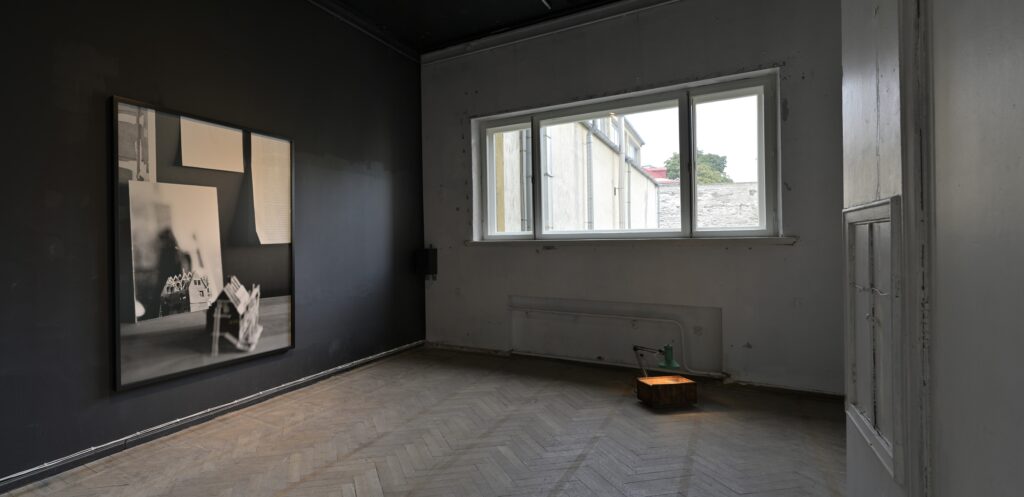Dénes Farkas
DDR
2020

Dénes Farkas’ installations are “private spaces with blurred borders” (Ingrid Ruudi), which seem imperfect and random. It is indeed through the re-use of imperfection that the magical perfectionism of Farkas’ work unveils. “I was always very much interested in Joseph Kosuth’s work and his desire to really define things in the world: a table is a table. A chair is a chair. So, I wanted to build these things in a way that their definition, their essence would shine through. I wanted to build them as simple as possible, but then I realized that they are not things but paper models representing things and that they have their own history and cannot solely function as objects, I” says Farkas about his paper models made years ago. Later, he started cutting real tables out of wooden boards, sawing their legs to the right length, rigging up shelves and boxes. Yet, the deliberate primitiveness of the material and the execution, the “furniture” he has used to display his model house and greenhouse, his typewriter (Dénes is the son of typographers!) and other significant “trinkets”, reminds us of the same paper models he started with – inevitably imperfect and enchanting in their constant reuse.
The magic of naming, turning to architecture as an organising system, striving towards perfection through imperfection, moving beyond the “artistic”, as Adam Budak formulates the charm of Dénes Farkas’ work, is also familiar to Tõnis Saadoja, Jevgeni Zolotko and the Prinzhorn artists.